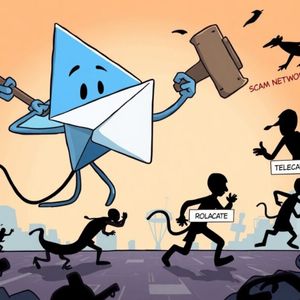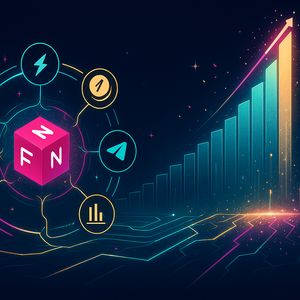

Polygon Network Faces Shocking Hour-Long Block Production Halt
BitcoinWorld Polygon Network Faces Shocking Hour-Long Block Production Halt The world of decentralized finance thrives on continuous uptime and seamless operations. So, when news broke that the Polygon network , a prominent scaling solution for Ethereum, experienced an unexpected hour-long halt in block production, it naturally sent ripples through the crypto community. This incident underscores the critical importance of network stability in the fast-paced blockchain ecosystem and prompts a deeper look into what exactly happened and why it matters. What Exactly Happened During the Polygon Network Halt? On a recent day, community members began reporting an unusual silence on the Polygon network . For approximately one hour, the network, which is designed to process transactions rapidly, ceased generating new blocks. This effectively meant that new transactions could not be processed, and the chain’s state remained static during this period. The reports initially surfaced on Polygon’s official forums and across social media channels, as users and developers noticed their transactions pending indefinitely and dApps failing to update. At the time of the initial reports, there was no immediate official explanation provided by the Polygon team regarding the cause of the outage. This lack of immediate clarity often fuels speculation and concern within a decentralized community that values transparency and responsiveness. While an hour might seem brief in traditional terms, in the context of a blockchain designed for continuous operation, it represents a significant disruption. Users relying on the network for time-sensitive transactions, DeFi interactions, or NFT trades would have felt the direct impact of this unexpected pause. Why Is a Block Production Halt on the Polygon Network So Significant? A blockchain network’s primary function is to process and record transactions in an immutable, continuous ledger. When block production halts, this fundamental process stops. For the Polygon network , a Layer 2 solution built to enhance Ethereum’s scalability, such an event carries particular weight: Disruption to Decentralized Applications (dApps): Thousands of dApps, from DeFi protocols to gaming platforms, rely on Polygon for their operations. A halt means these applications become unresponsive, leading to frozen funds, failed transactions, and a poor user experience. Loss of Trust and Confidence: Reliability is paramount in blockchain. Even a brief outage can erode user and developer trust, potentially leading them to seek more stable alternatives. This is especially true for institutional investors or large enterprises considering blockchain adoption. Economic Impact: For users with active trades, liquidity provisions, or time-sensitive operations, an unexpected halt can lead to financial losses or missed opportunities. For instance, if a user needed to execute a trade to avoid liquidation, a network pause could be disastrous. Centralization Concerns: While most blockchains strive for decentralization, a network halt can sometimes highlight dependencies or potential single points of failure, even if unintended. The speed and transparency of the resolution process become key indicators of decentralization and resilience. This incident serves as a stark reminder that even robust blockchain systems are not immune to technical challenges, and continuous vigilance is necessary to maintain their integrity and performance. How Does the Polygon Network Maintain Uptime and What Went Wrong? The Polygon network operates on a Proof-of-Stake (PoS) consensus mechanism, relying on a distributed set of validators to propose and validate new blocks. This design inherently aims for high availability and fault tolerance. Validators stake MATIC tokens as collateral and are incentivized to keep the network running smoothly. If a validator misbehaves or goes offline, their stake can be slashed, encouraging good behavior. In a healthy PoS network, if one validator node experiences an issue, others should seamlessly take over block production. A complete halt suggests a more widespread issue affecting a significant portion of the validator set or a critical component of the network’s core infrastructure. Common causes for such incidents in blockchain networks can include: Software Bugs: A newly discovered bug in the network’s client software or a recent upgrade could cause unexpected behavior across multiple nodes. Consensus Mechanism Glitches: Issues within the algorithm that dictates how validators agree on the next block can lead to a deadlock. Infrastructure Issues: Problems with underlying cloud providers, hardware failures, or network connectivity across multiple data centers. Coordination Failures: In rare cases, a lack of synchronized updates or patches among validators can lead to a chain split or halt. While the exact root cause for this specific Polygon network halt was not immediately disclosed, such incidents typically trigger an intensive investigation by the core development team and the broader validator community to identify, diagnose, and rectify the problem. The goal is always to restore service as quickly and safely as possible, often through coordinated software updates or a restart of affected services. What Are the Actionable Insights for Users and Developers on the Polygon Network? For users and developers operating within the blockchain space, incidents like the Polygon network halt offer valuable lessons and actionable insights: Diversify Your Portfolio and Strategies: Relying solely on one network for critical operations carries inherent risks. Users and developers should consider diversifying their assets and dApp deployments across multiple robust blockchain networks to mitigate single-point-of-failure risks. Stay Informed: Follow official channels (e.g., Polygon’s Twitter, Discord, forums) for real-time updates during network anomalies. Quick access to accurate information can help in making timely decisions. Understand Network Risks: No blockchain is entirely immune to downtime or bugs. Users should always be aware of the inherent risks associated with using decentralized technologies, especially when dealing with significant funds or time-sensitive transactions. Prepare for Contingencies: Developers should build their dApps with resilience in mind, incorporating error handling for network unavailability and potentially exploring multi-chain strategies or fallback mechanisms where feasible. This incident, while disruptive, also highlights the resilience of decentralized communities. The rapid reporting by users and the eventual resolution, even if delayed, demonstrate the collective effort involved in maintaining these complex systems. Looking Ahead: Ensuring Stability and Transparency for the Polygon Network The hour-long halt in block production on the Polygon network serves as a potent reminder of the challenges and responsibilities inherent in operating a large-scale blockchain. While the immediate impact was temporary, such events underscore the continuous need for robust infrastructure, diligent maintenance, and transparent communication from development teams. As blockchain technology matures, the focus on uptime, security, and decentralization will only intensify. Users and developers alike expect a high degree of reliability from the networks they choose to build on and interact with. The Polygon team’s response to this incident, including their investigation and any subsequent measures to prevent recurrence, will be crucial in reinforcing confidence in the network’s long-term stability and its commitment to the decentralized ethos. Ultimately, every incident, whether minor or significant, offers an opportunity for learning and improvement. The collective experience of the community and the dedication of the core teams are vital in ensuring that the future of decentralized finance remains resilient and trustworthy, even when faced with unexpected bumps in the road. Frequently Asked Questions (FAQs) Q1: What does it mean for a blockchain network to ‘halt block production’? A1: When a blockchain network halts block production, it means that new transactions cannot be processed, and no new blocks are being added to the chain. The network effectively stops operating until the issue is resolved and block production resumes. Q2: Was user data or funds at risk during the Polygon network halt? A2: Typically, during a temporary halt in block production, existing user funds and data on the blockchain are not lost or compromised. The network simply stops processing new activity. Once the network resumes, all previous data remains intact, and pending transactions can then be processed. Q3: How often do major blockchain networks experience such halts? A3: While rare for established, large-scale networks, temporary halts or significant slowdowns can occur due to various technical issues, including software bugs, consensus mechanism glitches, or infrastructure problems. Development teams continuously work to minimize such occurrences through rigorous testing and robust architecture. Q4: What steps can I take as a user to protect myself during a network outage? A4: As a user, staying informed through official communication channels, diversifying your crypto holdings across different networks, and understanding the risks associated with decentralized platforms are key. Avoid attempting critical transactions during reported outages. Q5: How did the Polygon network recover from this halt? A5: While the exact details of the recovery mechanism for this specific incident were not immediately public, blockchain networks typically recover from halts through coordinated efforts by validators and core developers. This often involves identifying the root cause, deploying necessary patches or updates, and then restarting or resynchronizing the network’s operations. Q6: What is the long-term impact of this halt on the Polygon network’s reputation? A6: The long-term impact depends heavily on the Polygon team’s transparency, the thoroughness of their post-mortem analysis, and the measures they implement to prevent future incidents. While any downtime can be concerning, a quick and effective resolution, coupled with clear communication, can help maintain and even rebuild community trust. If you found this article insightful, consider sharing it with your network! Help us spread awareness about the critical aspects of blockchain stability and the ongoing developments in the crypto space. To learn more about the latest crypto market trends, explore our article on key developments shaping the Polygon network’s future price action. This post Polygon Network Faces Shocking Hour-Long Block Production Halt first appeared on BitcoinWorld and is written by Editorial Team














